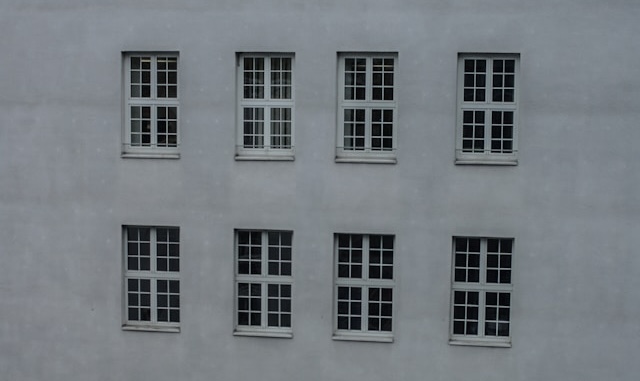Energy-Efficient Vinyl Windows in Toronto: What Makes a Difference
August 25, 2025In Toronto’s extreme climate, energy-efficient vinyl windows make a significant difference through superior insulation (U-values of 0.22-0.36) and durability. You’ll benefit from Low-E2 coatings and double glazing that minimize heat transfer, potentially reducing energy costs by 15-25% annually. Factory-made precision guarantees proper sealing and consistent quality, while maintenance-free vinyl withstands seasonal temperature fluctuations for 20-30 years. The combination of these features delivers a 5-7 year payback period and substantial long-term savings.

Why energy efficiency matters in Toronto’s climate
Toronto’s climate deals out extreme temperature fluctuations throughout the year, with winters dropping well below freezing and summers heating up considerably. Your home’s thermal barrier directly impacts both comfort and energy costs during these seasonal extremes.
Energy-efficient vinyl windows Toronto experts recommend can reduce heat transfer by up to 30% compared to standard alternatives. This insulation benefit translates to measurable savings on heating bills during -20°C winter days and cooling costs during humid 30°C summers.
Beyond monetary savings, proper window efficiency reduces your environmental footprint and extends your HVAC system’s lifespan by reducing operational strain. With Toronto’s electricity rates continuing to rise annually, investing in windows specifically engineered for our climate conditions represents both immediate comfort and long-term financial prudence.
Key features of vinyl vs. other materials
When comparing window frame materials, vinyl consistently outperforms alternatives in several key categories. First, vinyl delivers superior thermal insulation, with U-values typically ranging from 0.22-0.36, compared to aluminum’s 0.50-1.0. Unlike wood frames that require regular painting and sealing, vinyl remains maintenance-free throughout its 20-30 year lifespan.
Cost-effectiveness sets vinyl apart, typically priced 10-30% lower than comparable fiberglass or wood options. Modern vinyl formulations resist UV degradation, preventing the yellowing and brittleness that plagued earlier generations. Vinyl’s inherent moisture resistance prevents warping, rotting, and corrosion—problems that commonly affect wood and metal frames.
For Toronto’s climate extremes, vinyl’s expansion coefficient allows it to withstand seasonal temperature fluctuations without compromising structural integrity or energy performance.
Role of Low-E coatings and double glazing
Two critical technologies define energy-efficient vinyl windows: Low-E coatings and double glazing. Low-E (low emissivity) coatings consist of microscopically thin metallic layers applied to window glass that reflect infrared light while allowing visible light to pass through. This technology prevents heat transfer while maintaining natural illumination in your home.
Double glazing creates an insulating barrier by sealing two panes of glass with a space between them. This design dramatically reduces heat conductivity compared to single-pane windows. When combined with Low-E coatings like Omega’s Low-E2 glass, you’ll experience superior thermal performance year-round.
These technologies work together to minimize heat loss in winter and reduce solar heat gain in summer, ultimately lowering your energy bills and improving comfort throughout Toronto’s extreme seasonal temperature variations.
Benefits of factory-made precision products
Unlike mass-produced alternatives, factory-made vinyl windows offer superior precision that’s essential for ideal energy efficiency in your home. When windows are manufactured directly at the factory, like Omega’s products, they’re built to exact specifications with tight quality control at every stage.
Factory craftsmanship guarantees proper sealing—critical for preventing air leakage that accounts for up to 30% of heating and cooling loss. You’ll benefit from consistent dimensions and hardware installations that create air-tight barriers against Toronto’s extreme temperatures.
Additionally, factory-direct products eliminate middleman markup while maintaining higher quality standards. The controlled manufacturing environment results in windows with perfectly aligned components, properly sealed Low-E2 glass units, and precisely calibrated hardware—all contributing to maximum energy efficiency and prolonged performance in your home.
How better windows shrink heating/cooling costs
High-quality vinyl windows directly impact your home’s energy efficiency by creating an effective thermal barrier between indoor and outdoor environments. The Low-E2 glass technology found in Omega windows greatly reduces heat transfer, reflecting infrared energy while allowing visible light to pass through.
During winter months, these windows prevent indoor heat from escaping, maintaining comfortable temperatures without overworking your heating system. In summer, they block solar heat gain, reducing air conditioning demands by up to 30%.
The multi-chambered vinyl frames provide superior insulation compared to aluminum alternatives, eliminating thermal bridging issues. Precision manufacturing guarantees tight seals that prevent air leakage—a common source of energy waste in older windows.
You’ll notice the difference immediately on your utility bills, with most homeowners recouping their investment within 3-5 years through reduced energy costs.
Installation importance—seal and frame quality
Even the most energy-efficient vinyl windows won’t perform to their potential if they’re improperly installed. Professional installation guarantees proper sealing around the frame, preventing air leakage that compromises energy efficiency.
Your installer should use high-quality weather stripping and caulking to create an airtight seal between the window frame and your home’s structure. This critical barrier prevents thermal transfer and moisture infiltration. Frame quality matters equally—look for reinforced vinyl frames with multiple chambers that provide superior insulation.
During installation, technicians should check for square, level placement and secure anchoring to prevent warping or shifting over time. Proper flashing installation directs water away from the window opening, protecting against rot and structural damage. These installation details drastically impact your windows’ long-term performance and energy savings.
Long-term ROI of energy-efficient windows
While proper installation sets the foundation for window performance, the financial benefits unfold over time. Energy-efficient vinyl windows from Omega typically reduce heating and cooling costs by 15-25% annually, yielding a payback period of 5-7 years in Toronto’s climate.
Your investment compounds through reduced HVAC system wear, potentially extending equipment lifespan by 3-5 years. Additionally, high-performance Low-E2 glass protects interior furnishings from UV damage, preserving their value.
Property value enhancement represents another significant return—energy-efficient windows typically recover 70-80% of installation costs upon resale. Moreover, you’ll benefit from enhanced thermal comfort, eliminating cold spots and drafts that compromise livability. For broader design inspiration, you might also explore expert advice on how to choose window styles for your whole house, which helps you balance aesthetics with performance.
The cumulative savings over a 20-year window lifespan can exceed 300% of your initial investment.
